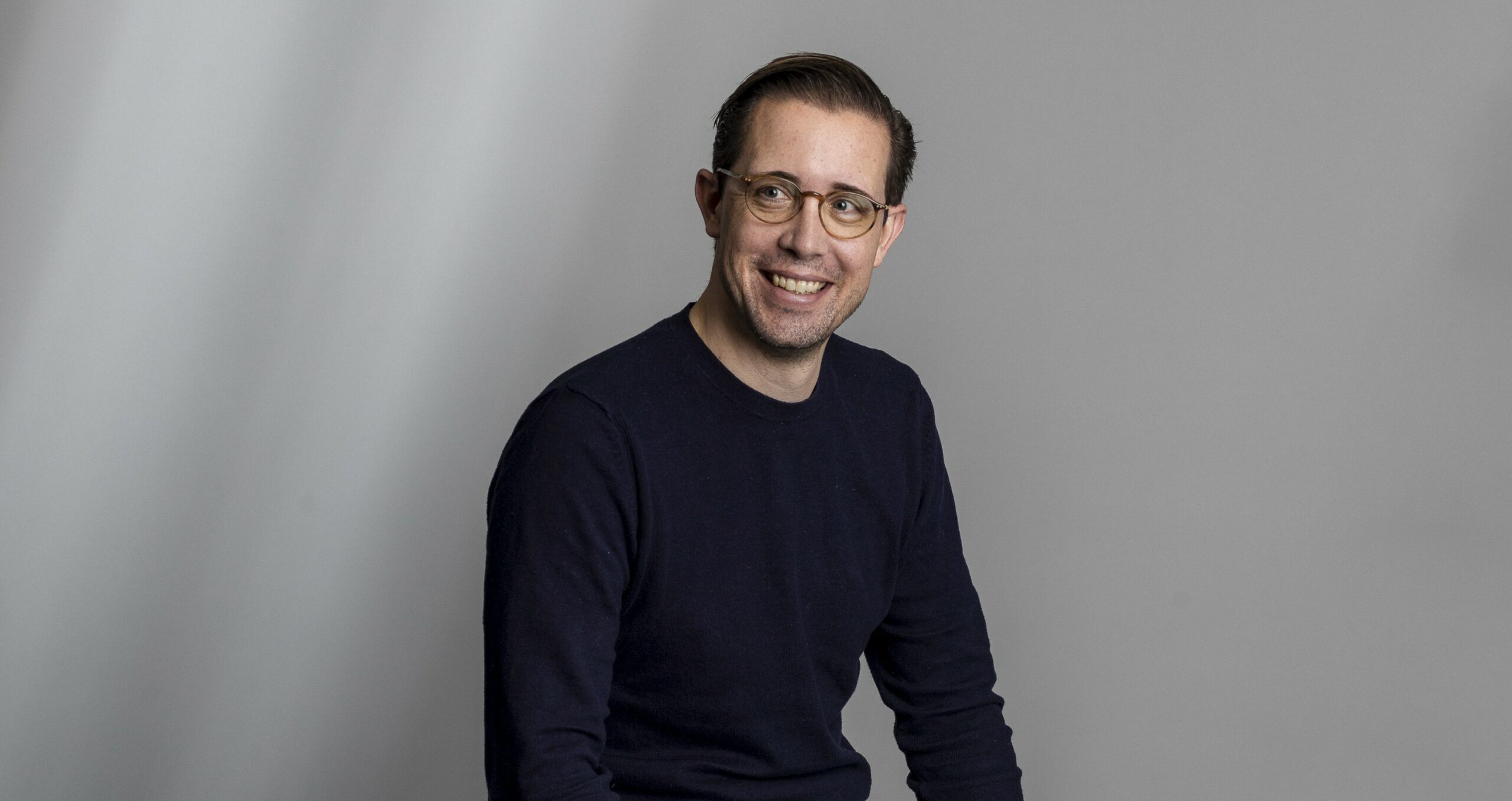Does a mathematician, who once worked as a manager at financial services institutions like Deutsche Börse, understand design?
“Very well indeed,” says Boris Jitsukata, who currently heads the German operations of the Japanese design company Goodpatch, confidently. The listed company appointed Thomas Elm, a mathematics graduate, as its new head of their German operations. Not “even though, but because he comes from the financial services industry,” emphasizes Jitsukata, who will return to the Goodpatch studio in Japan shortly.
After all, as a manager, Elm has experienced first-hand the transformation of the traditional financial services industry into a fast and digitally active sector and has closely observed the industry’s new heroes. And in this process, he realized that design is the only chance to create services and products that truly meet the user’s needs.
“With design”, Elm believes, “companies not only respond appropriately to trends; they actually move forward and take the lead”. This is a spirit in which Elm wants to support the transformation of other industries as well.
Mr. Elm’s path to design consultancy
Mr. Elm, you have worked as a manager at financial companies for many years. What brings you to a design consultancy now?
People often ask me how I manage to take such a leap. I realize that my time in London must have had a significant influence on how I view career trajectories. In London, it was quite normal for me to work with former surgeons, chemists or teachers. The knowledge for the job is acquired relatively quickly, different backgrounds are valuable and beneficial when dealing with complex issues. Boris and I share this belief.
The most important thing you have to ensure is that there is a match in personal attitude. Before joining, I had already known Goodpatch for a long time because in 2018, during my time at Deutsche Börse, I was a Goodpatch customer myself. Together we built a new trading model (now known as “EnLight”), which has already won several innovation awards. The project was an eye-opener and taught me that design is more than just aesthetics. Goodpatch has a very effective method to systematically think through complex problems, putting the user at the center and repeatedly testing and improving the solution.
Today, more than ever, the world has become increasingly complex. We need more and more tools to navigate this complexity, and therefore thinking about how people interact with our applications is not just “nice to have”. In my opinion, putting the user front and center is the right approach to solve the problems of tomorrow – which is exactly why I am here today.
BankingHub-Newsletter
Analyses, articles and interviews about trends & innovation in banking delivered right to your inbox every 2-3 weeks
"(Required)" indicates required fields
Customer experience in the financial services industry
The customer experience in the financial services industry is often still quite “sterile”, compared to other industries. Why do you think is that?
You are right, and it seems almost a bit crazy, considering that the financial services industry was once a pioneer in digital transformation. The credit card was introduced in the 1960s. Digital trading at Nasdaq was already possible in the 1970s. So how come an industry with such a head start is now so behind in customer experience?
I think two things are crucial in this respect.
- First, there is a strong risk awareness in the financial services industry. Mistakes tend to cost a lot of money, and it is therefore easier to “play it safe” and “stick with what we know”. This meant that many banking system interfaces remained essentially unchanged for decades (just look at the Bloomberg terminals).
- Second, I think the standard of what is considered a “good customer experience” has dramatically increased. Anybody interacting with banking services also likely to be a customer of other services or products such as Netflix, Amazon or Google. This sets a benchmark for what is possible and therefore shifts customer expectations. What was good ten years ago is most likely not good enough today.
The good news is that banks are catching up quickly. I love initiatives like ING Labs, where solutions, such as Invisible Ticket, CoorpID or Yolt, originate. Of course, it takes courage to experiment, because not every idea will succeed. Still, it shows that banks can make a difference – even beyond traditional offerings – when they think holistically about the user.
Distinction between product and packaging
Where is the distinction between product and packaging? Does it still exists at all nowadays?
I think there is a distinction. In a digital world, however, you cannot consider them separately but rather have to address them sequentially. First of all, you have to make sure that what you are offering solves a problem encountered by the user. We call this the “problem-solution fit”, and it is the first thing we validate on every project. The solution defines WHAT you offer. Your product is the value you deliver for the user.
Only after you have solved the WHAT you can start thinking about HOW you want to offer it – the packaging, in other words. This is where you consider the customer experience, and it starts with the first second your product is used. There are no second chances for a first impression, so make every user interaction count. This is why you need to think through the customer journey carefully and make it as effortless as possible. Designing a good user experience helps the user to recognize and appreciate the value of your product.
What role do digitalization and new mobile devices play in this development?
I believe banks are now competing with more players than just other banks. They compete with all the apps available on the smartphone. If there is a problem, there is usually “an app for that”, too. So, it’s all about both solving a problem (the WHAT) and providing a superior experience (the HOW). It is a good exercise for banks to get inspired by what other industries already offer.
Getir, a new food delivery service, has cut delivery times from two days to ten minutes – what would an equivalent look like in the financial sector? Spotify sees the future in podcasts – how might the financial services industry leverage this idea?
If anything, I hope the digital transformation shows us what is possible to overcome internal hurdles. Banks will increasingly engage with customers who find their information online and have clearer expectations of what digital services should look like. As we ask at Goodpatch: how can you deliver “lovable” products for these customers?
What does this mean for the strategic importance of design?
I think, the message is received, loud and clear: design matters. We experience this shift personally through the types of projects we have. Whereas in the past, we were often brought in to help launch a new service or product, several of our assignments have now become much more strategic. Many companies are currently building up their in-house UX team, and we are often asked to help them develop their team’s capabilities.
The question is no longer whether to invest in design but how to best leverage it. We help establish the internal processes and formats to ensure that the internal UX teams contribute to shaping the business strategy rather than just “make things look pretty” at the end. Design is gradually becoming a mindset to tackle the complex challenges of the 21st century.
Will banking become an app in the future?
Challenger and neobanks in particular rely heavily on this channel. Will banking become an app in the future?
I think challenger banks are really strong when it comes to taking one particular use case and creating a superior streamlined customer experience around it. N26 started with bank accounts. Scalable Capital offers trading. Coinbase does crypto. These use cases are usually the low-hanging fruit, as they are often one-size-fits-all offerings and can be standardized.
What about highly individual offerings like mortgages or personal investment strategies? Often the customer does not even know yet what they want or what is possible. This is where talking the options through with a financial advisor helps, and it will be hard to accomplish this information exchange via apps alone.
I think the future of banking is hybrid. I can handle the “bread and butter” business myself on the phone, but I am glad to be able talk to somebody about my individual needs.
Future success factors
What does this development mean for traditional, strongly branch-oriented financial service providers? Which success factors will be particularly relevant in the future?
I think that the future of financial services represents a huge opportunity for local bank branches. It will require some rethinking, though. Neobanks have done a great job of getting new groups interested in financial topics – especially twenty-somethings who are starting to have some disposable income. And while it has become easy to “get started” and “just try it out”, it is still difficult to develop a long-term financial strategy – especially when you don’t have a financial background.
There is a huge need for financial knowledge, and different communities are emerging around this topic. Just think about the FIRE (financial independence; retire early) movement, conferences on investing in ETFs and the current interest in crypto currencies. Communities are deeply rooted in human-to-human interaction. So how about local banks hosting events with influencers in the financial community and teaching people about smart investing? What if banks could show investors the positive impact of sustainable strategies?
Local banks can stay relevant, but it is essential to think bigger than having an ATM and some financial consultants. Local banks will thrive when they tap into the communities around them. Ultimately, it is all about gaining trust. And trust is best earned through direct interaction and by taking one’s time.
Thank you very much for the interview!






